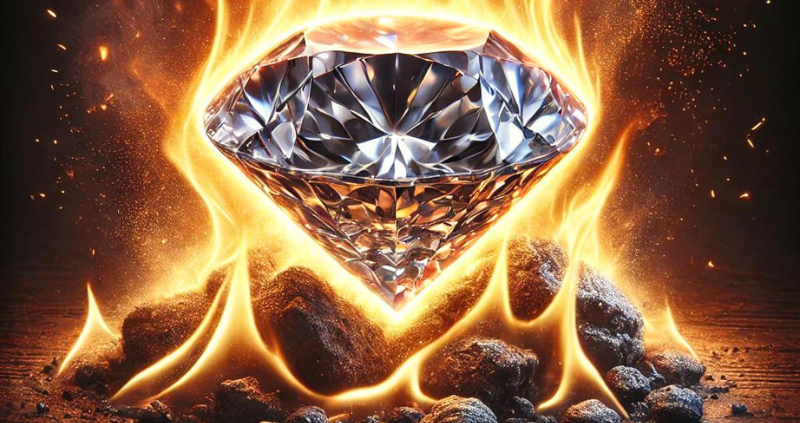Diamonds Under Fire: What Happens When Diamonds Are Exposed to Extreme Heat?
Diamonds are often seen as the ultimate symbol of strength and resilience, with their unbreakable nature making them a coveted gem for centuries. However, like any material, diamonds have their limits, especially when exposed to extreme heat.

Diamonds are often seen as the ultimate symbol of strength and resilience, with their unbreakable nature making them a coveted gem for centuries. However, like any material, diamonds have their limits, especially when exposed to extreme heat. In this article, we’ll explore what happens to diamonds under such conditions and answer some common questions about their durability.
What Happens to Diamonds in Extreme Heat?
Diamonds are formed deep within the Earth’s mantle under intense pressure and heat, making them one of the hardest natural substances known to man. However, when diamonds are exposed to extreme heat outside their natural formation conditions, they can undergo changes.
At temperatures above 1,292°F (700°C), diamonds begin to oxidise. This means that the carbon atoms in the diamond start to react with oxygen in the air, potentially leading to a loss of mass. The diamond can develop a cloudy or white appearance due to the oxidation process. However, the diamond doesn’t melt, as it would require temperatures over 7,230°F (4,000°C) for that to happen, which are rarely encountered outside of specialised industrial environments.
What Happens to Diamonds in Fire?
If a diamond is exposed to fire, the outcome depends on the duration and intensity of the flames. While diamonds can resist very high temperatures, they are not entirely fireproof. In a house fire, for instance, where temperatures can reach up to 2,000°F (1,100°C), a diamond may burn. When this happens, the carbon atoms in the diamond combine with oxygen, forming carbon dioxide and effectively turning the diamond into gas.
In practical terms, a diamond exposed to such high temperatures can lose its lustre, develop surface damage, or, in extreme cases, be entirely consumed by the fire. Therefore, while diamonds are incredibly durable, they are not impervious to the effects of intense heat and flames.
What Happens if a Diamond is Heated?
When a diamond is subjected to controlled heating, such as in jewellery repair, where it is exposed to a jeweller's torch, it can withstand high temperatures without damage. However, this is under the condition that the diamond is properly protected and the heating is carefully managed.
If a diamond is heated too quickly or unevenly, it may develop cracks or fractures. These internal stress points can compromise the integrity of the stone. Therefore, jewellers typically use special techniques to protect the diamond during heating, such as using a protective coating or ensuring the stone is gradually heated and cooled.
Can a Diamond be Damaged by Heat?
Yes, a diamond can be damaged by heat, but this largely depends on the circumstances. Under normal conditions, a diamond will maintain its structural integrity and brilliance. However, under extreme conditions, such as prolonged exposure to a high-temperature flame, damage is possible. The diamond might lose its sparkle, develop surface marks, or in the worst cases, disintegrate into carbon dioxide.
While the likelihood of such extreme damage is low, it’s important to take precautions, especially when wearing diamond jewellery near open flames or during activities that involve high temperatures.
A Revolution in Diamond Trading
At GA Demands, we understand that diamonds are not just a symbol of luxury but also a valuable investment. Whether you’re a buyer or a seller, our platform offers a seamless, secure, and efficient way to trade diamonds without the hassle of intermediaries.
In the world of diamond trading, where trust and transparency are paramount, GA Demands is setting a new standard. Download the app today and experience the future of diamond trading, where your investments are always in good hands.

